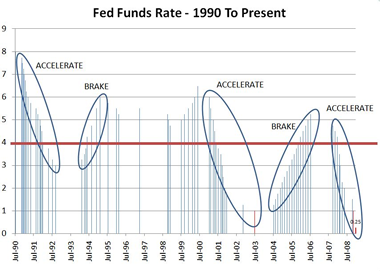U.S. Extreme Temperatures Update
SEARCH BLOG: GLOBAL WARMING
When I recently published some charts based on NOAA reported state temperature extremes by month, the data was only through May 2004. I went back to the NOAA site and looked at their monthly summaries for June 2004 - January 2007 for new record high temperatures (February 2007 was incomplete, but indicated one of the coldest Februarys on record for many areas of the U.S.). This was a bit tedious, but you are welcome to double check. Simply download the file from Climate Science and then go through the records shown at NOAA for the updated period with the state/month records listed on the file.
http://climatesci.colorado.edu/comment-uploads/us_extreme_temp.xls Click on the "Temperature Database" tab at the bottom. These data do not yet reflect updates. [UPDATED FILE AVAILABLE ON RIGHT SIDE SPECIAL ANALYSES]The only instance of a record high state temperature was one for South Dakota in July 2006 that tied a record previously set in July 1936. Based on the way the data was shown last time, 1936 would lose one record and 2006 would be credited with the record (thus the bias toward later years that I wrote about previously).
There were no state record high extremes for the remainder of 2004 or all of 2005. NOAA does report some city records, but no city records equalled or surpassed the existing state/month records within the updated timeframe.
Based on these data, 1936 would be reduced from 30 record highs to 29; 2006 would have 1.
The 1994 through 2006 record count would now look like this:
1994 - 9Total for 13 years is 62.
1995 - 5
1996 - 4
1997 - 3
1998 - 19
1999 - 4
2000 - 17
2001 - 0
2002 - 1
2003 - 0
2004 - 0
2005 - 0
2006 - 1
Compare this to 1929 - 1941:
1929 - 7The total for 13 years is 136.
1930 - 16
1931 - 8
1932 - 10
1933 - 6
1934 - 25
1935 - 1
1936 - 29
1937 - 2
1938 - 8
1939 - 12
1940 - 4
1941 - 8

This chart includes years with no records to show the 10-year moving average. Click on image for enlarged view.Again, these are extreme temperatures for the state. NOAA has been summarizing the data with comments to emphasize how hot temperatures have been lately. Look at the NOAA link to see for yourself.
It is possible that the NOAA data is incomplete with regard to record high state temperatures for the updated period, but I doubt it.
Also see:
Pielke Sr., R.A., T. Stohlgren, W. Parton, J. Moeny, N. Doesken, L.
Schell, and K. Redmond, 2000: Spatial representativeness of temperature
measurements from a single site. Bull. Amer. Meteor. Soc., 81, 826-830.
http://blue.atmos.colostate.edu/publications/pdf/R-221
Pielke Sr., R.A., T. Stohlgren, L. Schell, W. Parton, N. Doesken, K.
Redmond, J. Moeny, T. McKee, and T.G.F. Kittel, 2002: Problems in
evaluating regional and local trends in temperature: An example from
eastern Colorado, USA. Int. J. Climatol., 22, 421-434.
http://blue.atmos.colostate.edu/publications/pdf/R-234








